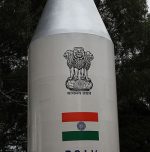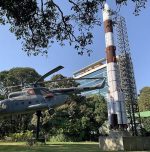Facts about GSAT – 6A

Today the Indian Space Research Organisation (ISRO) is going to launch GSAT-6A from Sriharikota at 4:56 pm.
This is its latest high power S-band communication satellite.
Here are some important things to know about GSAT – 6A:
.
.
.
- GSAT – 6A is the second S-band communications satellite.
- The main purpose of this satellite is to provide a platform for developing technologies like management techniques.
- These techniques are useful especially in satellite-based mobile communication applications.
- This satellites helps in improving mobile communication in the country through multi-beam coverage facility.
- The satellite also helps demonstrate the ‘unfurlable antenna’.
- This six-meter-wide antenna appears like an umbrella.
- After putting the GSAT-6A satellite into orbit, this antenna will be ‘unfurled’.
- This antenna is three times broader than normal antennas generally used by ISRO.
- This antenna is specifically designed for the mission and allows mobile communications from anywhere through hand-held ground terminals.
- It is also useful in military operations.
- S-band is useful for weather radars, surface ship radar, and other communications satellites.
- The satellite has a weight of 2-tonne and its cost is estimated at ₹270 crores.
- The lifespan of the mission is approximately 10 years.
- The overall size of the satellite is 1.53m X 1.65 m X 2.4 m.
- ISRO’s GSLV-F08 rocket is used to launch this satellite. The height of the rocket is 49.1 metres and the weight is 415.6 tonnes.
- The launching of GSAT – 6A will be done in three stages.
- The initial or first stage will comprise of two propellants – Earth storable liquid propellants and Composite solid propellant.
- The second stage will have Earth storable liquid propellants.
- The last or third stage will comprise of Cryogenic propellants.
- The estimated time to put the GSAT-6A satellite in orbit is 17 minutes and 46.50 seconds.
Image credit: Photo by NASA on Unsplash (Free for commercial use)
Image Reference: https://unsplash.com/photos/8Hjx3GNZYeA









Leave a Reply